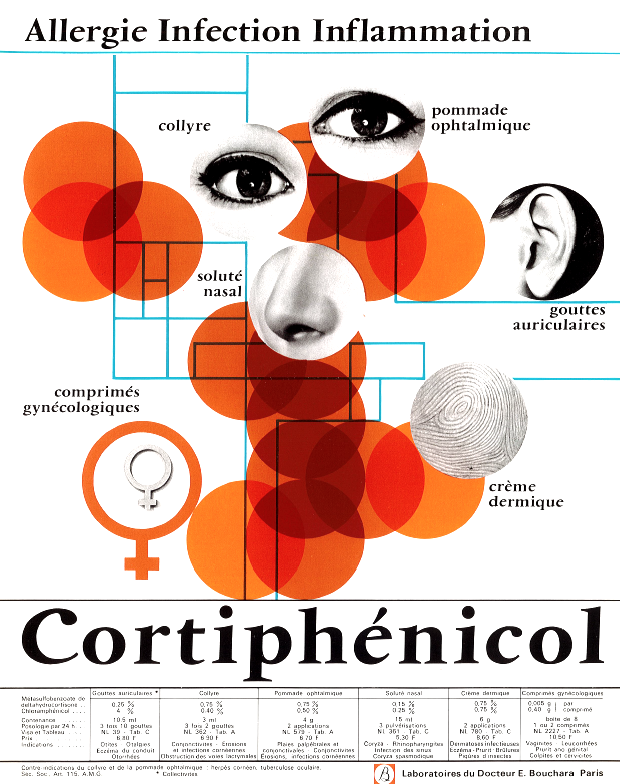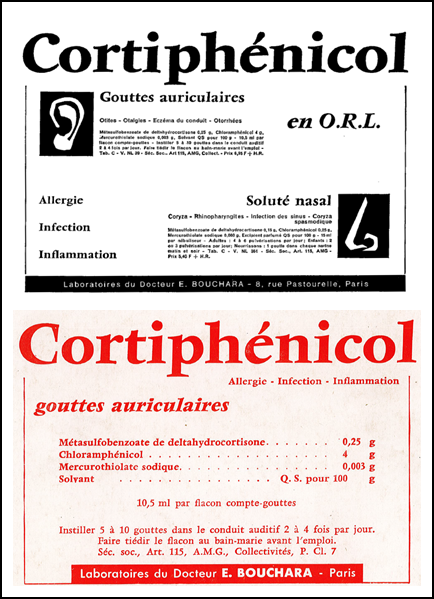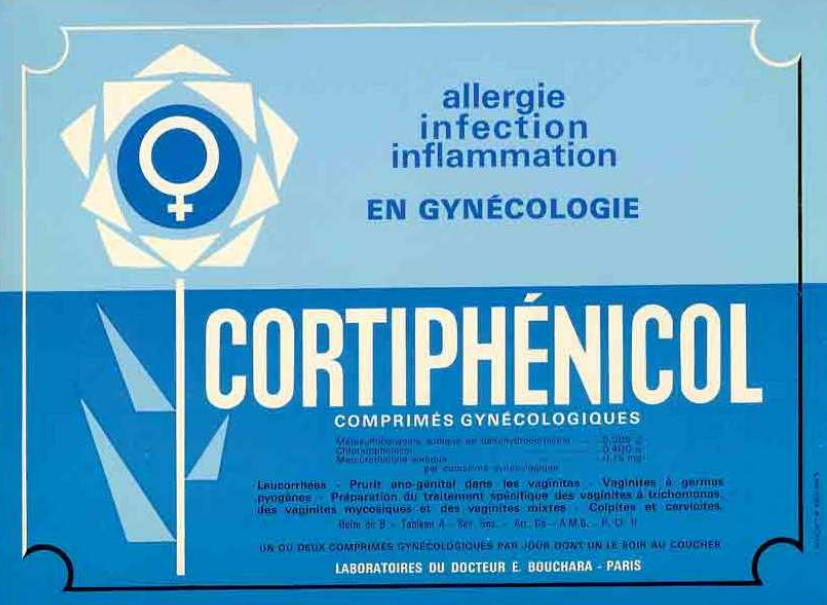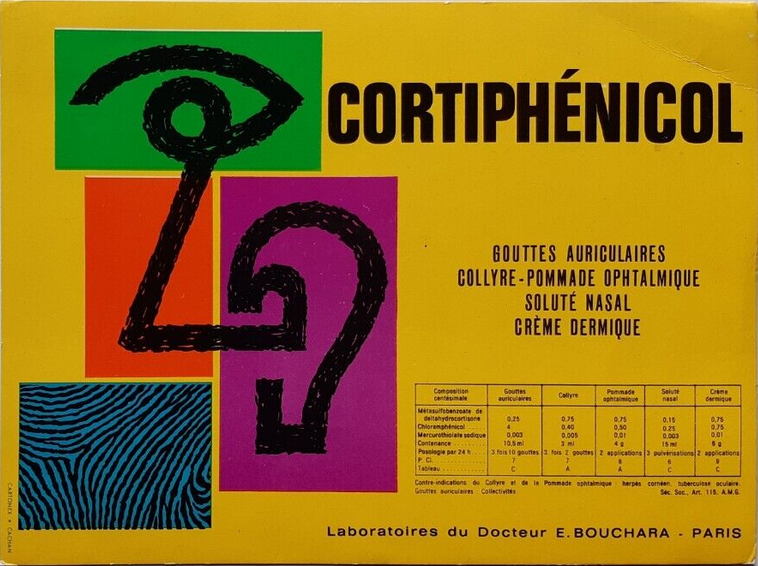This anti-inflammatory drug contained deltahydrocortisone (better known as predsisolone) as a metasulfobenzoate ester, combined with the antibiotic agent chloramphenicol and sodium merthiolate (also known as mercurothiolate). This latter product is an organomercurial agent with antiseptic properties. Sodium merthiolate (known as Thimerosal®) is still largely used today as a preservative agent in pharmaceutical and personal care (cosmetic) products, but it represents a source of ethylmercury pollution in aquatic ecosystems.


Four formulations of Cortiphenicol were proposed at that time: (1) conventionnal tablets for gynecology applications (treatment of vaginitis, prurit, leucorrhea), (2) a dermal cream for topical applications (to treat skin inflammatory affections), (3) an ophthalmic ointment, (4) eye drops (to treat uveitis for example) and (5) a nasal spray (for rhinosinusitis). A panel of formulations to treat a large range of diseases and affections, inflammations and allergies. Today, Cortiphénicol® is no longer marketed but several equivalent products containing prednisolone and an antibiotic agent can be found.





